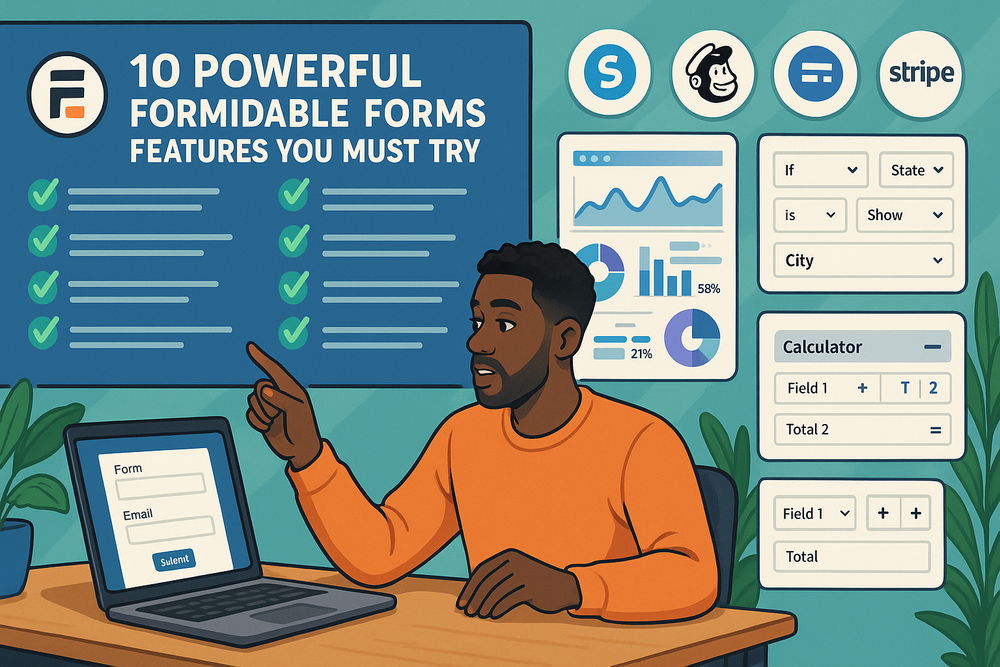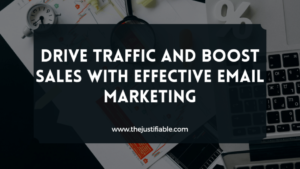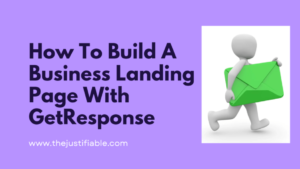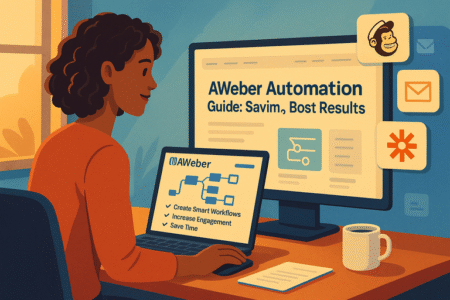Table of Contents
Formidable Forms is more than just a form builder—it’s a powerhouse tool packed with features that can transform how you collect and manage data on your website. But are you really using it to its full potential?
What if you could create dynamic forms that react to user input, generate custom calculations, or even submit blog posts from the front end—all without touching a line of code? Curious how to boost conversions with multi-step forms or automate workflows with smart integrations?
In this post, I’ll walk you through 10 powerful Formidable Forms features that you absolutely need to try if you want to unlock its full power. Let’s dive in and explore what makes this plugin a true game-changer.
1. Drag-And-Drop Builder That Simplifies Form Creation
This is where Formidable Forms really shines—it lets you build powerful forms without the headache of learning code. Whether you’re a beginner or a seasoned WordPress user, the drag-and-drop builder offers a smooth, flexible experience.
Create Advanced Forms Without Touching Code
If you’ve ever hesitated to build a form because it seemed too technical, this feature flips that worry on its head. The interface is clean and intuitive. You can just grab form elements—like text fields, checkboxes, file uploads, or radio buttons—and drop them exactly where you want.
What I love is how much you can accomplish without ever opening a code editor:
- Add validation rules with just a click
- Set default values for certain fields
- Use HTML blocks for inline instructions or visuals
You’re not boxed into basic forms either. You can easily craft donation forms, lead generation surveys, or even appointment request systems—all from this one builder.
Customize Layouts Using a Visual Interface
Designing the look and feel of your form isn’t just for developers anymore. With Formidable Forms, you can customize your layout visually—spacing, columns, field alignment, and more—without editing CSS.
Let me break it down for you:
- Want two fields on one row? Drag them side by side.
- Need consistent spacing across mobile and desktop? Adjust padding and margins visually.
- Prefer cleaner design with hidden labels? Toggle label visibility or use placeholders.
It’s fast, responsive, and gives you control over the user experience without relying on a separate theme editor.
Save Time With Real-Time Preview and Edits
One of the sneaky time-savers is the real-time preview feature. You get to see exactly how your form looks as you build it—no need to click back and forth between the backend and frontend.
From what I’ve seen, this cuts development time in half. It’s also great for catching formatting errors, like misaligned fields or missing labels, before you hit publish.
It’s the kind of simple feature that has a big impact when you’re building or updating multiple forms regularly.
2. Smart Conditional Logic for Dynamic Interactions

If you’re building static forms, you’re leaving a lot on the table. Smart conditional logic transforms your forms from passive collectors to dynamic experiences that respond to user behavior.
Show or Hide Fields Based on User Behavior
Have you ever filled out a form where the next question only showed up after you answered the current one? That’s conditional logic in action—and it works beautifully in Formidable Forms.
You can:
- Show different fields depending on dropdown selections
- Reveal follow-up questions only if a checkbox is selected
- Hide irrelevant sections to keep the form short and user-friendly
The result is a cleaner interface and better engagement. Visitors aren’t overwhelmed with fields they don’t need to see.
Personalize User Experience With Conditional Email Routing
One often overlooked gem is the ability to change email recipients based on form responses. Say you run a multi-department company—support tickets can be routed to different teams automatically, just based on the user’s selected topic.
Here’s how I’ve seen this used effectively:
- Sales inquiries go to your sales team
- Job applications go to HR
- General feedback goes to your main inbox
It’s a small tweak that saves hours and keeps communication organized.
Build Complex Form Workflows Without Extra Plugins
What I find incredibly valuable is that you can design multi-layered workflows without having to stack on multiple plugins. For example:
- Combine logic conditions with email notifications and redirects
- Trigger follow-up emails based on quiz scores or inputs
- Route different types of leads into your CRM via integration rules
This kind of automation is where Formidable Forms starts to feel more like a workflow builder than just a form plugin.
3. Repeater Fields for Collecting Multiple Entries
Repeater fields are one of those features that quietly change the way you build forms. They allow users to add as many responses as they need—without cluttering your form with unnecessary fields upfront.
Let Users Add Unlimited Responses Dynamically
One of the most practical reasons to use repeater fields is the flexibility they offer your users. Instead of guessing how many entries a person might need to fill in, you let them decide in real time. They can add new sets of fields on the fly—whether it’s five or fifty—without needing to refresh or reload anything.
This is especially useful when:
- Collecting multiple family member details
- Logging work history or education records
- Adding products to an order form
It creates a far smoother experience and gives users full control over how much information they want to share.
Ideal for Job Applications, Team Lists, or Product Orders
Let me give you a few real-world scenarios where repeater fields are a perfect fit:
- Job Applications: Applicants can add multiple positions, employers, or references without reaching out for help.
- Team Registrations: Coaches or managers can enter entire team rosters with names, roles, and contact info—all in one go.
- Product Order Forms: Customers can add items to a cart-style form, each with quantities, sizes, and preferences.
This kind of smart form building not only saves time but also gives your forms a professional touch.
Maintain Clean Data Structures for Easier Processing
From what I’ve seen, repeater fields also make backend management so much easier. Since entries are grouped together and stored in a structured format, it’s simpler to review, export, and analyze later.
You’re not dealing with messy spreadsheets or fields named “field_1a,” “field_1b,” and so on. Everything is packaged neatly, which is a huge win if you’re importing this data into a CRM or database.
If you’re working with dynamic data and want to keep things clean, repeater fields are absolutely worth using.
4. Powerful Calculations for Quotes and Estimates
When it comes to interactive forms, calculations add a whole new level of functionality. Formidable Forms makes it surprisingly easy to build smart, auto-calculating forms that adjust on the fly.
Auto-Calculate Totals for Invoices and Pricing
You can set up your forms to automatically calculate totals as users fill them out. This is perfect for:
- Service-based quotes
- Product bundles with quantity selection
- Registration fees based on event options
It’s not just about math—it’s about speed and clarity. Users see the total cost right away, which builds trust and reduces confusion at checkout.
Combine Fields for Custom Quoting Logic
You can get pretty creative with how you combine fields to shape your pricing logic. For example, use dropdowns to apply rates, checkboxes for add-ons, and sliders for quantity inputs. Then, tie them all together with calculation formulas.
One example I like is a landscaping quote builder:
- Users choose the size of their yard
- Select optional services (mowing, edging, weed control)
- The total updates live as they go
This level of flexibility means you can design cost calculators that actually match your business model.
Improve Conversion With Instant Feedback on Costs
Here’s the real magic: showing users what they’ll pay before they click submit. From what I’ve seen, this one feature can lift conversions significantly—especially for services or products with variable pricing.
People love transparency. Giving them instant estimates builds confidence and reduces bounce rates. They’re more likely to follow through when they understand what they’re signing up for.
And you don’t have to rely on a third-party quoting tool—Formidable Forms handles it all within the form itself.
5. Multi-Page Forms to Boost Completion Rates

Long forms can scare users off, especially when everything is crammed into a single screen. Breaking them into multiple steps helps ease the pressure and improves user experience.
Break Long Forms Into Smaller, Manageable Steps
No one wants to scroll through an overwhelming list of questions. Multi-page forms solve that by guiding users through a step-by-step process. Each page feels like progress, not a chore.
Here’s where it shines:
- Job applications with multiple sections
- Client onboarding forms split into categories
- Event registrations with attendee and payment steps
Users are more likely to complete your form when it’s divided into logical, digestible chunks.
Add Progress Bars to Encourage Completion
A progress bar might seem small, but it makes a huge difference. It shows users how far they’ve come and how much is left—giving them a sense of control.
You can:
- Use a visual progress bar across the top
- Show steps numerically (e.g., Step 1 of 4)
- Add motivational text like “Almost there!”
This simple addition boosts form completion rates by reducing drop-off, especially on mobile devices.
Seamlessly Transition Between Sections Without Reloads
With Formidable Forms, moving between pages doesn’t require a full page reload. This makes transitions smoother and faster, keeping users focused.
Instead of breaking the flow with slow page refreshes, everything feels like one continuous experience. From what I’ve seen, this helps keep users engaged until they hit “Submit.”
6. Front-End Post Submissions Without Logging In
Giving users the ability to submit content from the front end opens the door for guest posts, job listings, and user-generated content—all without requiring backend access.
Let Users Submit Blog Posts or Listings Securely
Not everyone wants to—or should—log in to your site just to submit something. Formidable Forms lets you create front-end submission forms so users can contribute content without touching the WordPress dashboard.
Here are a few practical use cases:
- Guest authors submitting articles
- Vendors adding product listings
- Users posting events or classified ads
Everything is done securely through your form, keeping your site protected while encouraging contributions.
Customize Post Formatting and Category Selection
You’re not stuck with a one-size-fits-all submission. You can control what content is submitted, how it looks, and where it appears on your site.
You can allow:
- Pre-filled content templates
- Custom post titles, images, and tags
- Category or post-type selection based on form input
It’s flexible enough to match your editorial or business process, all from one easy-to-manage form.
Approve or Moderate Submissions With Ease
Want to review submissions before they go live? No problem. You can hold them for admin review and publish only after approval.
This helps:
- Maintain content quality
- Prevent spam or inappropriate posts
- Keep your workflow efficient without needing extra plugins
It’s a seamless way to invite community involvement while keeping control over what gets published.
7. Advanced File Uploads With Custom Settings
Whether you’re collecting resumes, product images, or legal documents, having robust file upload options makes a big difference in how you manage submissions.
Control File Types, Sizes, and Quantity Per Field
You can set strict rules to control exactly what gets uploaded. This protects your site from bloated files or unsupported formats, and helps users avoid common mistakes.
Customize:
- Accepted file types like PDF, JPG, DOCX
- Maximum upload size per file
- Total number of uploads per user
This is perfect for use cases where you want to keep uploads consistent and secure.
Store Uploads Securely in WordPress Media Library
Uploaded files are automatically stored in your WordPress media library (or a custom folder, if you prefer). From there, you can access, review, and organize everything in one place.
It keeps everything centralized and manageable, which is great when working with large volumes of user files or long-term submissions.
Offer Resume Submissions, ID Verification, and More
With advanced file upload settings, you can confidently collect sensitive or important documents:
- Job applications with resume uploads
- Membership forms with ID verification
- Client intake forms with document requirements
You’re not just uploading files—you’re streamlining entire workflows around digital submissions.
8. Visual Form Styler With Built-In Customization Tools

Styling forms used to mean dealing with CSS or hiring a designer—but Formidable Forms makes it easy to stay on-brand without any of that hassle.
Match Brand Aesthetic Without External CSS
You don’t need to write a single line of code to give your forms a polished, professional look. The visual styler lets you customize every element—from buttons and borders to font sizes and spacing—right from your WordPress dashboard.
This means:
- You can match your form colors to your brand palette
- Style different field types consistently
- Make your forms visually appealing without relying on your site theme
For small business owners or creators without design support, this is a game-changer.
Choose Fonts, Colors, and Padding Right in the Dashboard
Everything is controlled from one place. No flipping between pages or wrestling with style sheets.
You can:
- Select from web-safe fonts that fit your brand
- Adjust background and text colors for fields and labels
- Modify padding and margins for better layout spacing
It’s intuitive, quick, and updates in real time so you can see changes as you make them.
Instantly Preview Mobile and Desktop Styles
We’ve all had that moment—forms that look fine on desktop but break on mobile. With built-in preview tools, you can test responsiveness instantly.
This lets you:
- Make mobile-specific tweaks before publishing
- Ensure accessibility across devices
- Catch layout issues early without using external tools
From what I’ve seen, this level of control is rare in form plugins and adds real value to anyone designing for both desktop and mobile audiences.
9. Entry Management Dashboard for Efficient Workflow
Once the forms are live, managing the submissions is where the real work begins. Formidable Forms offers a streamlined dashboard that helps you stay organized and take action fast.
View, Filter, and Export Entries in One Place
All your form submissions are collected in a centralized dashboard where you can:
- Search by keyword or filter by form fields
- View entries in table format for quick reference
- Export data to CSV for reports or offline use
Whether you’re handling customer inquiries or processing applications, having everything in one place speeds up your workflow.
Add Notes or Labels to Track Lead Status
Need to follow up with a lead or mark someone as a priority? You can add internal notes directly to entries or tag them with labels like “hot lead” or “needs follow-up.”
This makes collaboration easier when working in teams, especially for:
- Sales pipelines
- Customer service workflows
- Internal approval processes
It turns your form system into a lightweight CRM—no extra tools needed.
Integrate With CRMs or Email Tools for Seamless Sync
You can connect your form entries directly to external tools like:
- Mailchimp for growing your email list
- HubSpot or Salesforce for syncing leads
- Gmail or Slack for real-time team notifications
Automating this flow saves time and makes sure no entry slips through the cracks.
10. Built-In Integrations for Marketing and Automation
Formidable Forms doesn’t just collect data—it works behind the scenes to move that data where it needs to go. Its built-in integrations help you automate and scale without extra plugins.
Connect With Mailchimp, Zapier, PayPal, and More
Integrations are built right into the core of Formidable Forms, making it easy to connect with popular platforms:
- Send contacts to Mailchimp or ConvertKit
- Accept payments via PayPal or Stripe
- Trigger automations through Zapier for almost any app
You don’t need to be a developer to set up powerful workflows that save time and drive results.
👉 Sign up for Mailchimp and grow your email list smarter
👉 Explore how Zapier automations can streamline your workflow
👉 Accept payments faster with a free PayPal business account
Automate Notifications and Lead Nurturing Flows
You can automatically:
- Send confirmation emails to users
- Notify specific team members based on form input
- Trigger follow-up sequences or email campaigns
For example, a new client inquiry could instantly send a thank-you message, notify your sales team, and log the lead into your CRM—all from one form submission.
Combine With Webhooks to Trigger External Workflows
For more complex workflows, you can use webhooks to send form data to third-party services or custom APIs.
This is especially helpful for:
- Connecting to custom databases
- Triggering internal systems or inventory tools
- Managing subscriptions or user access
It’s like giving your form a superpower—letting it talk to almost anything online.






